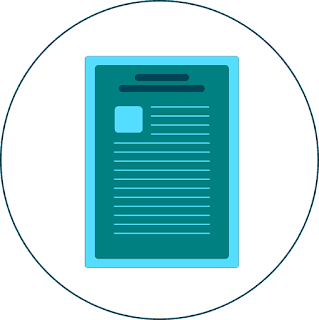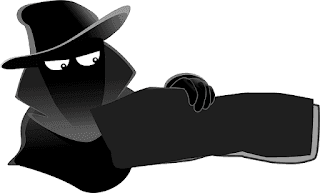Patenting is a prime concern for any inventor or business owner. There is a lot to know and understand when you try to patent any product or article, which is why patenting an invention by yourself is a very difficult task.
On the other hand, hiring an Intellectual Property lawyer in the US is very expensive.
Bao Tran, a Patent Attorney and the founder of Tran Associates says –
“Low cost options such as Legalzoom exist, but when you read the fine print, the cost is not low. For example, Legalzoom at https://www.legalzoom.com/business/intellectual-property/utility-patent-pricing.html claims they can do a utility after spending $699 and $2500, but the fine line says they do 10 claims and 5 pages of specification.
The problem with doing the minimal is that 2 years from filing when the case is examined, if a prior art reference comes up and the differentiating details are not there due to the 5page limitation, the case is not salvageable. That is why details are important in the application at filing.
Everything else can be fixed, but we need good details.
I met a startup founder who spent 3 months learning and doing his own provisional yesterday, and he wished there was a tool to guide him. I have been doing patents since 1993 and I have met many entrepreneurs with the same pain. The other alternative is to go to the branded law firms who do great jobs, but charges $15-20k per application.”
If you are reading this article, you must have made your mind to patent your invention yourself and may even have gotten some books to help yourself.
This article just serves as a non-exhaustive checklist of some essential factors recommended by experts that you need to keep in the back of your mind. This does not serve as legal advice nor as a step-by-step instruction in filing a patent. So, even if you’re filing a patent, you need a book.
The book Patent It Yourself is a pretty nice guide. You’ll be better off, if you get “Inventor’s Notebook: A Patent It Yourself Companion” along with it.
That out of the way, let’s now bring in the experts!
Patent Application Essentials and Pitfalls

#1. Mark Cann, founder, CEO / co-CTO of Cryo Energy Tech, specialising in zero emissions solutions for EVs 2.0. –
“Quality is far more important than quantity. In other words, having a few core patents is far more valuable than having 1000s of useless patents.
The same applies to the number of claims as well. In the event of a legal dispute, the claims are the most important section with the drawings and specifications providing clarity to any vagueness in the claims section.
Vagueness is not your friend so be specific regarding the novel features. Also, remember to incorporate prior art within the patent application.”
– Mark Cann
#2. Cindy Corpis, CEO of SearchPeopleFree –
“When drafting a patent application, the most common blunder is not fully detailing the innovation.
When a specification is written by an inventor or an unskilled patent agent, this can happen.
This also occurs because it is assumed that the person reading the patent application will grasp the invention adequately based on the information supplied.”
– Cindy Corpis

#3. Deborah Sweeney, CEO of MyCorporation.com, which assists entrepreneurs in incorporating and forming LLCs for their businesses and provides trademark and copyright application assistance –
“One of the critical components for drafting a patent application is to understand the type of small business patent you are filing for. According to the United States Patent and Trademark Office (USPTO), there are currently three types of patents one may file for to protect their invention.
These include utility, design, and plant patents. Utility patents tend to be a commonly filed small business patent, acting as a useful process, machine, article of manufacture, composition of matter, or new or useful improvement.
Design patents are filed for inventors of new, original, and ornamental designs for an article of manufacture. Plant patents are unique and granted for inventors of new, distinct plants as well as individuals that discover or asexually reproduce these plants.
If you have an invention that you believe should receive a patent, you will need to determine the type of small business patent to file for first before starting the filing process.”
– Deborah Sweeney

#4. John Woodson, a registered U.S. patent attorney with over two decades of patent preparation and prosecution experience for clients ranging from individual entrepreneurs to some of the top national and international corporations. –
“Remember the three D’s – deadlines, diligence, and disclosure. First, all of the U.S. and foreign patent offices have strict deadlines on when patent applications can be filed, so seek the help of a registered patent attorney or agent early in the process to make sure you do not miss your filing window.

Next, due diligence – in the form of searching for existing “prior art” related to the invention – is important.
This helps make sure the invention is not already in the public domain, and is very helpful in preparing patent applications. Finally, a thorough and complete disclosure of the invention is critical for successful patent applications.

One common pitfall is publicly disclosing an invention before filing for patent protection. Such public disclosures are an immediate bar to receiving patent protection in most countries, and in the U.S. this starts a one-year timer to get the application filed.
Delay is another common pitfall. Not only can this lead to loss of patent rights by missing a deadline, but the U.S. and foreign patent offices work on the “first to file” approach – the first one to file an application on an invention gets the patent.
One last pitfall – beware of scammers. Unfortunately, many inventors have been scammed by so-called “invention promotion” firms, so much so that the U.S. Patent and Trademark Office dedicates an entire section of its website to invention promoter and promotion firm complaints. Make sure to work with an experienced and reputable patent attorney or agent so that your invention is properly protected!”
– John Woodson

#5. Jeff Stollman, inventor with a number of US and foreign patents in fields that include artificial intelligence, blockchain, gamification, security, and privacy and having substantial experience in drafting patents that cover a wide range of applications and are bulletproofed to preclude easy workarounds –
“Two key criteria for drafting patents in the US are:
- ensuring that the claim is broad enough to be worthwhile
- ensuring that the claim structure will hold up in infringement litigation
Inventors commonly devise an invention to address a particular use case that arises in their work. They then may seek to patent this invention.
But prior to patenting the invention, they should take a step back to imagine in what other markets their invention may apply. Inventors need to take some time to consider what other [markets] their inventive step may find utility [in].
They must then ensure that their specification covers all possible applications.
This enhances the value of the patent. But even a broad patent may be useless if it hasn’t been adequately “bulletproofed.”
It is often best to retain an outside party with significant patent experience to review both the specification and the claims to ensure that simple workarounds cannot be used to bypass the patent, making it worthless.”
– Jeff Stollman
#6. Stephen Curry, CEO of CocoSign –
“In many ways, the claims of a patent application are the most significant section of the document.
The claims specify the legal context of patent security provided by a granted patent, as well as the path of the patent litigation. On the other hand, the common pitfalls all entrepreneurs face when drafting a patent application is the patent’s own words restriction claims.
Statements in the claim and trial record that would have no bearing on claim extent in other countries could limit claim scope in the United States.
Specificity is always important when analyzing claim creation. It is the absolute most reliable resource for determining the definition of a contested phrase.”
– Stephen Curry
#7. Daniela Sawyer, Founder and Business Development Strategist of FindPeopleFast.net, a web-based people searching website –
“One big problem [inventors] face when they choose to involve themselves, is the genuine problem of admissions.
Honestly, those involving themselves should be given patent-style Miranda warnings before they file a safety application or say anything during the trial of a pending patent application.
Everything you say can and will be used against you.”
– Daniela Sawyer

#8. Bao Tran, a Patent Attorney and the founder of Tran Associates –
“When drafting a patent application, it is essential to provide as much information as possible about the operations of the invention and put the text in the proper application form. While the form can be fixed by a lawyer after filing, the quality of the information can’t be fixed post filing.”
– Bao Tran
However, considering the difficult nature of filing a patent application, it is advisable that you bear the cost and get a lawyer to help you in this path. While creating this article we heard from a lot of experts who stressed the importance of getting an attorney to help in this regard.
And, for that we have devoted this final section to it.
Dangers of Patenting an Invention without Qualified Assistance

#1. Robert Barrows, founder of R.M. Barrows Advertising & Public Relations –
“Before I filed a patent application for a video tombstone I was thinking about, I bought a book called ‘Patent it Yourself’.
When I read part of that book, I realized I should really contact a patent attorney. So, I contacted the local Bar Association and they recommended one.
When I met with the attorney, he went through the steps and the initial costs. As the process continued, and I realized that there were very specific ways in which patent applications should be worded, I am very glad that I contacted a patent attorney.
Also, my patent application was rejected three times because of similarities to some “prior art,” and I finally received a patent on the Video Enhanced Gravemarker (U.S. Patent #7,089,495), four years after filing the initial application.”
– Robert Barrows
#2. William Scott Goldman, Managing Attorney / Founder of Goldman Law Group –
“As a prominent business and branding IP law firm, patent law is one of our specialty areas.
Unless the inventor is filing his own provisional application, anything else is much too complex for the average person to handle effective.
So for non-provisional patents, PCT filings, and even design patents, we strongly recommend hiring a patent attorney or agent.
Otherwise, one will likely encounter significant Office Action issues, typically in regard to claims drafting, or even prior art citations if a proper patent search wasn’t completed as the initial step. Failing to rely on expert advice and attempting to file pro se is always a major mistake and typically results in years of frustration, wasted time and lost government fees.”
– William Scott Goldman
Wrapping it Up
If your invention involves chemical formulas etc., for example the recipe of Coke, you may even consider keeping the invention as a trade secret. However for many businesses and inventions, that is not a feasibility.
Check out the financials of your business, and consider which of the two options will prove to be better for you. You may even consider getting additional funds for your startup in order to secure a law firm’s help in securing the patent if the patent is so crucial to your business.
As you can see, patenting is a very difficult procedure but taking the help of attorneys may also be too expensive for small businesses and startups. Therefore it is a matter of personal deliberation for each and every individual concerned.
If you liked this article, or if it benefited you in any way, kindly help spread the word by giving it a share!
For any queries or help with your startup, feel free to book a free consultation with us. You may also check out our list of services if you need any help with your business efforts.
Read Next:
- How You Can Protect Your Startup from Hackers and Other Online Threats
- Know how the GDPR Affects Marketers and You




















